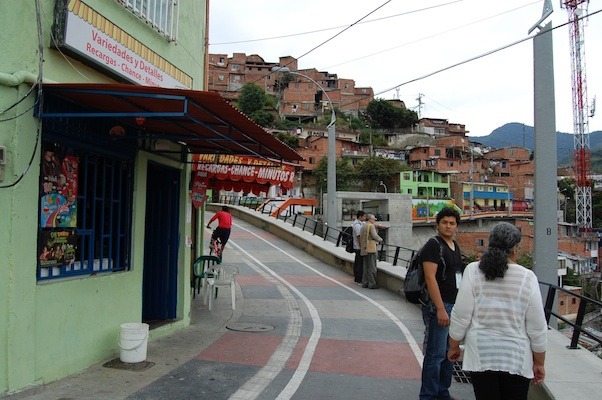
“Urban self-organization is a powerful dynamic that ought to be of more interest (and use) to urban designers, planners and other actors.”
In his recent article on Urban Acupuncture in Medellín, Colombia, expert on sustainable urban development Michael Mehaffy advocates urban self-organization for its “capacity to increase efficiency and fitness to human need” and lays out a series of design tools that could make it more effective, which he illustrates by analyzing an escalator intervention in Comuna 13 of the San Javier informal settlement in Medellín, Colombia. Citizen integration, participation, room for growth, community-led funding and bottom-up approaches are at the heart of a solid urban acupuncture strategy. Mehaffy quotes Sergio Fajardo, former mayor and now governor of Antioquia:
Citizen integration, participation, room for growth, community-led funding and bottom-up approaches are at the heart of a solid urban acupuncture strategy. Mehaffy quotes Sergio Fajardo, former mayor and now governor of Antioquia:
“This is nothing more than working with people for people, where the general interest always prevails over private interest, where everyone is invited to get involved in the changes, where no favors are negotiated for bureaucratic office or contracts and dignity and differences are respected. This is the only way to achieve the social transformations being demanded in the 21st century.”
Our interest in Medellín has a special relevance this year, being the field trip destination and one of the highlights of the 2012-13 program. Together with students of the Universidad Nacional de Colombia and the Graduate School of Planning and Architecture of the University of Columbia, New York, students will participate in the workshop “Rethinking the Urban Fringes in Medellín, Colombia: Land use strategies for the green metropolitan belt“.


Medellín, Siempre Mejorando!